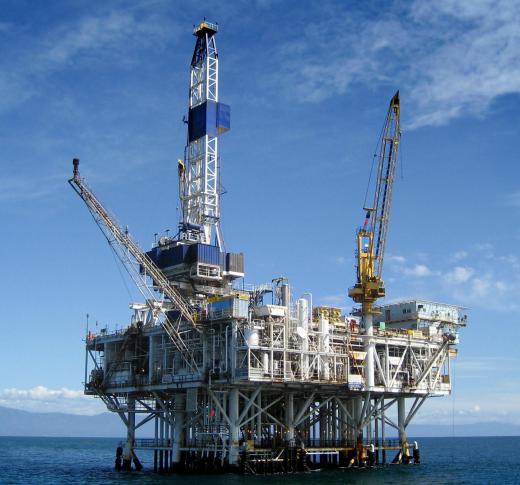Reservoir pressure is a measurement of the pressure inside an oil and gas deposit. This changes over time in response to geologic processes, as well as human activities like drilling into the reservoir to extract resources. When people provide measurements, they usually include information about the timing of the data collection, as this can be important to understanding the meaning of the measurement. For example, initial reservoir pressure indicates the measurement taken before people began exploiting the resources in the deposit.
Reservoirs, rather than taking the form of a large bubble under the earth, are usually found in deposits of highly porous or broken rock underground. The pressure inside can vary between pores and cracks, and people usually take a series of measurements so they can come up with a meaningful average. They may also graph the reservoir pressure across an area to show locations of high and low pressure, as this information may be useful when preparing for drilling.

Sometimes, pressure is so high, and a deposit is so close to the surface, that petroleum products bubble up without any outside assistance, forming deposits on the earth's crust. When people drill into reservoirs, the natural pressure may push oil and gas up into the drilling rig, allowing people to extract it more easily. Pockets of very high pressure can become dangerous, as they may create explosions or other safety hazards for workers at the site.
As people pull oil and gas out of a reservoir, the pressure will drop. When the well is closed, reservoir pressure can slowly build back up again. Personnel on site may make note of high and low recordings, as well as measuring pressure after resource extraction ends, to determine how much the pressure fluctuates once they stop drilling. This can be important for people monitoring the health of closed drilling sites, as they want to be sure to catch pressure buildups early so they can address them.
People can use a variety of tools to determine reservoir pressure. Computer systems handle many of the calculations necessary so people no longer need to do the math by hand. Pressure information is useful for everything from fitting equipment properly to estimating how much yield a reservoir may provide. Typically a geological survey team will conduct pressure measurements while collecting other basic data about a prospective drilling site so companies can decide whether they want to move forward with setting up operations.
Ever since she began contributing to the site several years ago, Mary has embraced the exciting challenge of being a About Mechanics researcher and writer. Mary has a liberal arts degree from Goddard College and spends her free time reading, cooking, and exploring the great outdoors.

